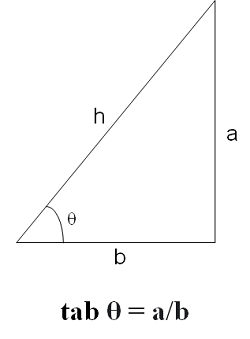Home »
C++ STL
valarray tan() Function in C++ with Examples
C++ valarray tan() Function: Here, we will learn about the tan() function, its usages, syntax and examples.
Submitted by Shivang Yadav, on May 08, 2022
The valarray class in C++ is a special container that is used for holding elements like an array and performing operations on them.
Tan Function (Mathematical Definition)
Mathematically, tangent is a trigonometric function that relate to the angle of a right-angled triangle. Its value is the ratio of the length of side opposite to the angle and side adjacent to the angle.


C++ STL std::tan(std::valarray) Function
The tan() function of the valarray class is used to find the tangent value of each element of the valarray. The method calculates the tangent value and returns a new valarray consisting of the resultant value.
Syntax
template<class T> valarray<T> tan (const valarray<T>& x);
// or
tan(valarrayName)
Parameter(s)
The method accepts a single parameter. It is the valarray on which the tan() function is applied.
Return value
The method returns a valarray with an element whose value is equivalent to the cosine of the value of the original valarray.
Example 1
#include <iostream>
#include <valarray>
using namespace std;
int main()
{
// Declaring valarray
valarray<double> myvalarr = { 1, 0.2, 1.3, 2.4, 5 };
// Printing the elements of valarray
cout << "The elements of valarray are : ";
for (double& ele : myvalarr)
cout << ele << " ";
// Creating a new valarray of tan values
valarray<double> tanValarray;
tanValarray = tan(myvalarr);
cout << "\nThe elements of tan valarray is : ";
for (double& ele : tanValarray)
cout << ele << " ";
return 0;
}
Output
The elements of valarray are : 1 0.2 1.3 2.4 5
The elements of tan valarray is : 1.55741 0.20271 3.6021 -0.916014 -3.38052
The angles converted by the cosine function are taken in radians and the normal angle we read is in degree. Here, radian value is equivalent to the angles in degree.
180° = π radians = 3.14159
90° = π/2 radians = 1.5708
60° = π/3 radians = 1.0472
45° = π/4 radians = 0.785398
30° = π/4 radians = 0.523599
Now, let's see the tan values of these.
Example 2
#include <iostream>
#include <valarray>
using namespace std;
int main()
{
// Declaring valarray
valarray<double> myvalarr = { 1, 0.2, 1.3, 2.4, 5 };
// Printing the elements of valarray
cout << "The elements of valarray are : ";
for (double& ele : myvalarr)
cout << ele << " ";
// Creating a new valarray of cos values
valarray<double> tanValarray;
tanValarray = tan(myvalarr);
cout << "\nThe elements of tan valarray is : ";
for (double& ele : tanValarray)
cout << ele << " ";
return 0;
}
Output
The elements of valarray are : 1 0.2 1.3 2.4 5
The elements of tan valarray is : 1.55741 0.20271 3.6021 -0.916014 -3.38052
Advertisement
Advertisement